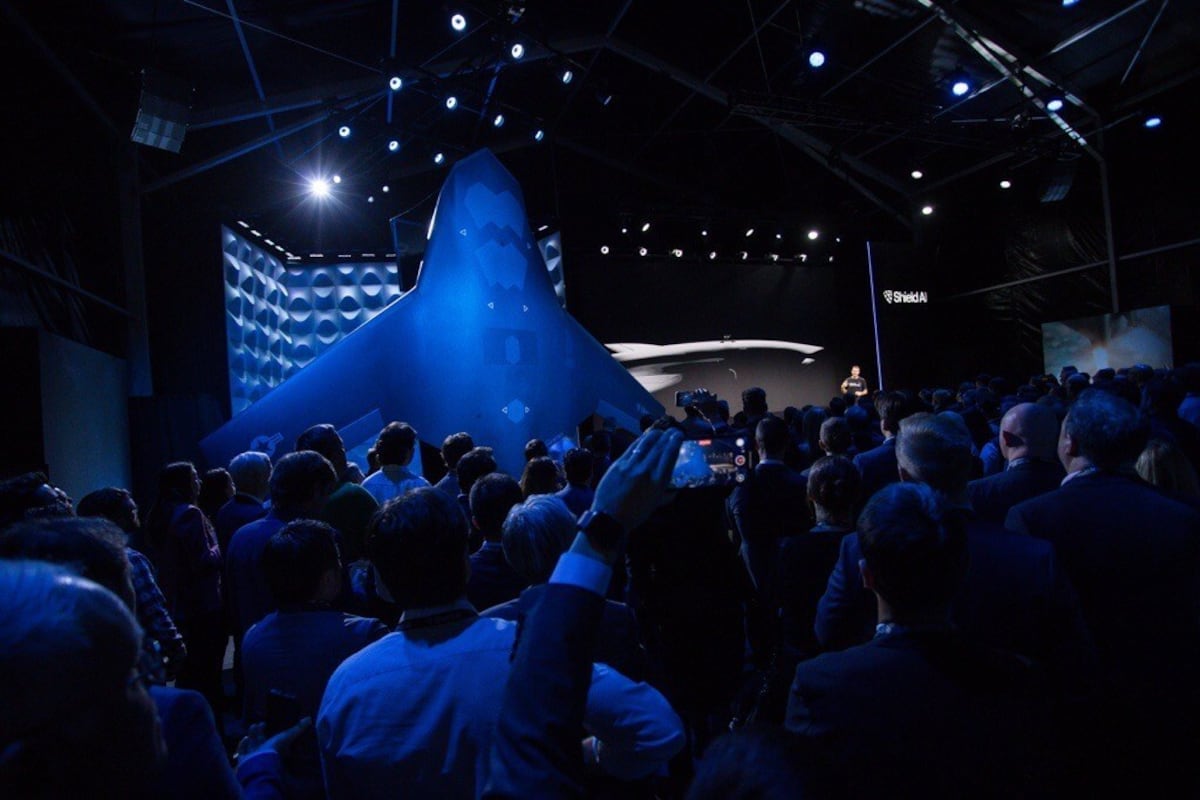Shield AI has recently unveiled its groundbreaking X-BAT, an autonomous vertical takeoff and landing (VTOL) fighter jet powered by artificial intelligence. This innovative aircraft is poised to redefine military combat strategies and aerial warfare concepts. The X-BAT’s unique design and AI-driven capabilities offer unprecedented versatility and efficiency in contested environments.
With its ability to operate independently of traditional runways, the X-BAT enhances the persistence, reach, and survivability of military forces. This article delves into the revolutionary features of the X-BAT, its potential impact on airpower, and the broader implications for the future of military aviation.
From its autonomous core to its multirole capabilities, the X-BAT represents a significant leap forward in unmanned aerial vehicle technology. We will explore how this cutting-edge aircraft could transform the way air forces wage war, offering a glimpse into the next generation of military combat aircraft.
X-BAT: Design and Capabilities
The X-BAT, designed for expeditionary and maritime operations, features Shield AI’s Hivemind software as its autonomous core. This enables the drone to perform vertical takeoffs and landings without the need for runways, making it suitable for use in contested environments. Brandon Tseng, co-founder and president of Shield AI, emphasized the importance of airpower without runways, stating that it “gives our forces persistence, reach, and survivability, and it buys diplomacy another day.”
With a range exceeding 2,000 nautical miles when fully armed, the X-BAT can strike from ships, islands, or austere sites lacking prepared runways. Its capabilities span strike and counter-air operations, electronic warfare, and intelligence, surveillance, and reconnaissance (ISR) missions.
Armor Harris, Shield AI’s senior vice president of aircraft, hailed the X-BAT as a “revolution in airpower,” citing its combination of VTOL capabilities, extended range, autonomy, and multirole functionality. This allows for greater flexibility in evolving threat scenarios.
According to Harris, “VTOL plus range solves survivability on the ground and dependency on tankers. Multirole [capability] provides critical flexibility as the threat evolves, because no plan survives first contact with the enemy. X-BAT’s ability to autonomously operate standalone or collaboratively allows it to project power when other assets aren’t around and simplifies kill chains.”
Hivemind Autonomous Core
At the heart of the X-BAT is Hivemind, Shield AI’s autonomous software that enables the drone to penetrate contested airspace, collaborate with manned aircraft, and execute coordinated tactics without constant communication. This autonomy allows the X-BAT to function as a drone wingman, aligning with the Air Force’s collaborative combat aircraft (CCA) concept, or to operate independently.
The U.S. Air Force has already utilized Hivemind to control its X-62A VISTA jet, an experimental F-16 modified for autonomous flight and dogfighting. Former Air Force Secretary Frank Kendall flew in the VISTA in May 2024, showcasing the advanced capabilities of the Hivemind software.
Affordability and Attritability
While Shield AI has not disclosed the exact cost of the X-BAT, the company asserts that its acquisition and lifecycle costs will be significantly lower than those of fifth-generation jets. This affordability makes the X-BAT an “attritable” asset, meaning the military can afford to sacrifice it on missions without incurring substantial financial losses.
The Air Force has prioritized affordability and attritability in its CCA program, seeking to expand mission capabilities without straining the budget. This concept of “affordable mass” is crucial for maintaining a robust and sustainable air force.
Integration and Compatibility
The X-BAT’s compact design allows for up to three units to occupy the space of a single legacy fighter or helicopter. Its “platform agnostic” design facilitates integration with both current and future Air Force and Navy concepts, enhancing its versatility and adaptability.
U.S. Air Force CCA Program
The Air Force emphasizes that its CCAs are drones designed for fighter missions. The initial candidates, developed by General Atomics and Anduril, feature mission design series designations starting with YFQ, distinguishing them as fighter-designated drones within Air Force nomenclature.
Expert Opinions
Stephen Losey, the air warfare reporter for Defense News, highlights the potential of the X-BAT to transform air warfare. In his article, Losey quotes Brandon Tseng on the importance of runway-independent airpower for deterrence and diplomacy.
Conclusion
The Shield AI X-BAT represents a significant advancement in autonomous military aviation. Its VTOL capabilities, extended range, AI-driven autonomy, and multirole functionality position it as a game-changer in modern air warfare. The X-BAT enhances military forces’ persistence, reach, and survivability while offering a cost-effective solution for expanding mission capabilities.
As the U.S. Air Force and other allied air forces continue to explore unmanned aerial vehicle technology, the X-BAT demonstrates the potential of AI-powered drones to revolutionize combat strategies. Its ability to operate independently or collaboratively, combined with its affordability and attritability, makes it a valuable asset for projecting power in contested environments.
The X-BAT’s innovative design and capabilities signal a shift towards a future where unmanned systems play an increasingly critical role in maintaining air superiority and ensuring national security.

Leave a Reply